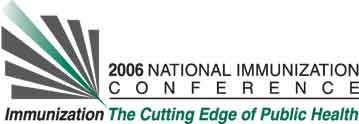Deborah L. Wexler and
Teresa Asper Anderson. Immunization Action Coalition, 1573 Selby Avenue, Suite 234, St Paul, MN, USA
Learning Objectives for this Presentation:
1) By the end of the presentation participants will be able to understand how the vaccine-critical movement includes many players with different motivations.
2) By the end of the presentation participants will be able to better counter vaccine misinformation.
Background:
Misinformation about vaccine safety can spread quickly through a country and have lasting consequences. Three examples illustrate this point. First, in the United States, the belief that the preservative thimerosal causes autism has led to an avalanche of ill-conceived legislative initiatives designed to regulate vaccines. Second, in the United Kingdom, a claim that MMR vaccination may precipitate autism has caused MMR vaccination rates to fall as low as 60% in some parts of the U.K. Third, in Nigeria, a rumor that polio vaccination could lead to HIV infection or sterility led to an increase in polio cases in Nigeria and nearby countries.
Objectives:
1) Categorize the individuals, organizations, and industries promoting misinformation or disinformation about vaccines in the United States and their reasons for doing so.
2) Provide resources to help providers counter the arguments of these groups.
Methods:
Examine and categorize misinformation about vaccines in the United States as presented via websites, listservs, and the mainstream media.
Results:
Movements questioning the safety and efficacy of vaccines are fueled by activist parents; the media; politicians; distrust of government, medicine, or industry; religious/ethical issues; profit motivation; the Internet; and the reality of imperfect vaccines.
Conclusions:
Vaccine-critical movements are difficult to stop. For today's parents who have not seen the effects of most vaccine-preventable diseases, injecting a healthy child with a questionable substance is viewed as a greater risk than possibly contracting a rare disease. Governmental agencies, nonprofits, and healthcare professionals need to be prepared to prevent and counter misinformation before it spreads and causes lasting damage. Helpful resources for providers, parents, and patients are available.
Web Page:
www.immunize.org
See more of Posters
See more of The 40th National Immunization Conference (NIC)

